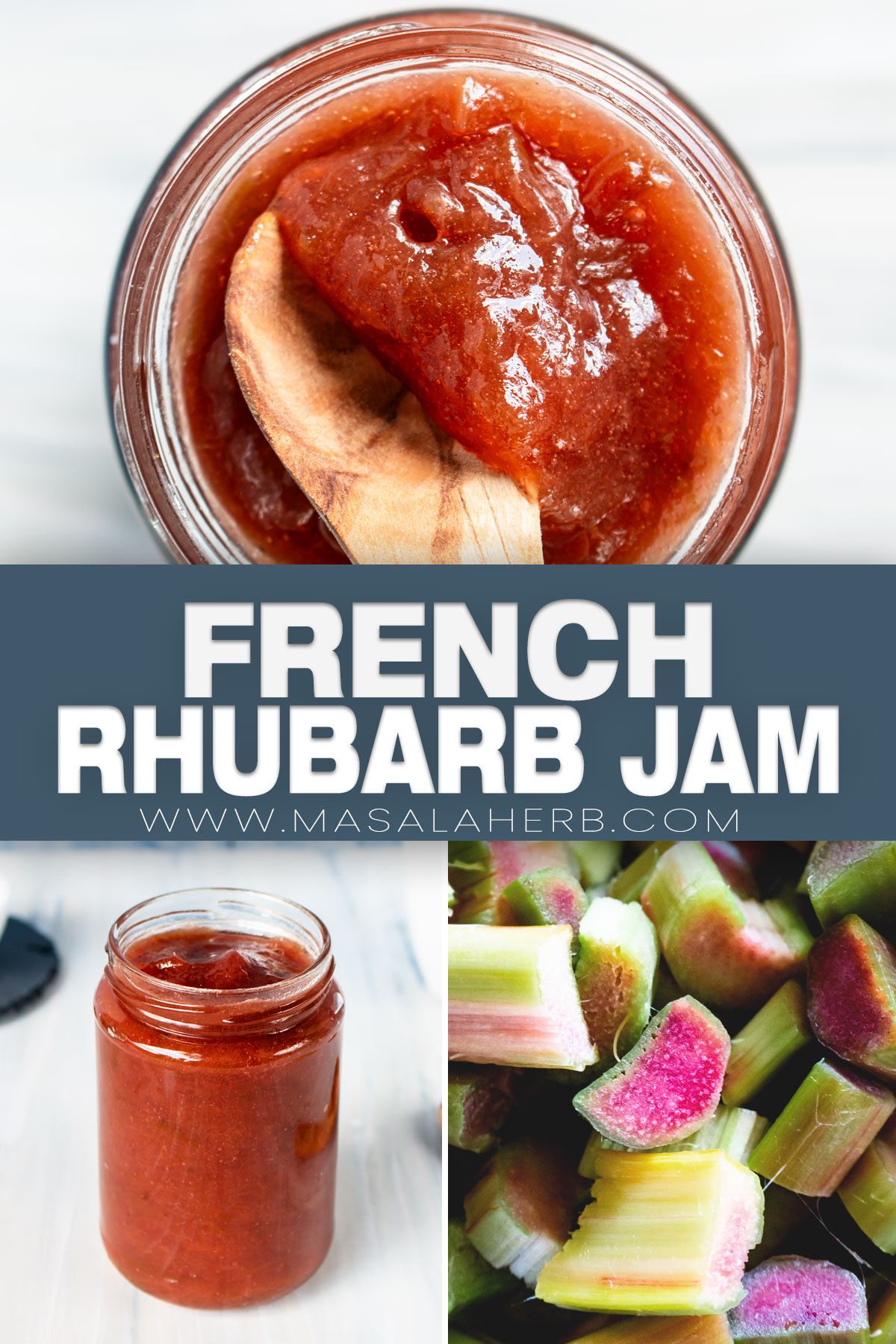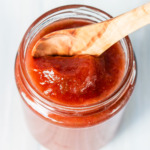
My family's French Rhubarb Jam Recipe prepared with only 3 ingredients, and without pectin or any other artificial setting ingredients.
This jam recipe is simple, straightforward, and perfect for you if you are looking for a way to use up a bounty of rhubarb stalks.
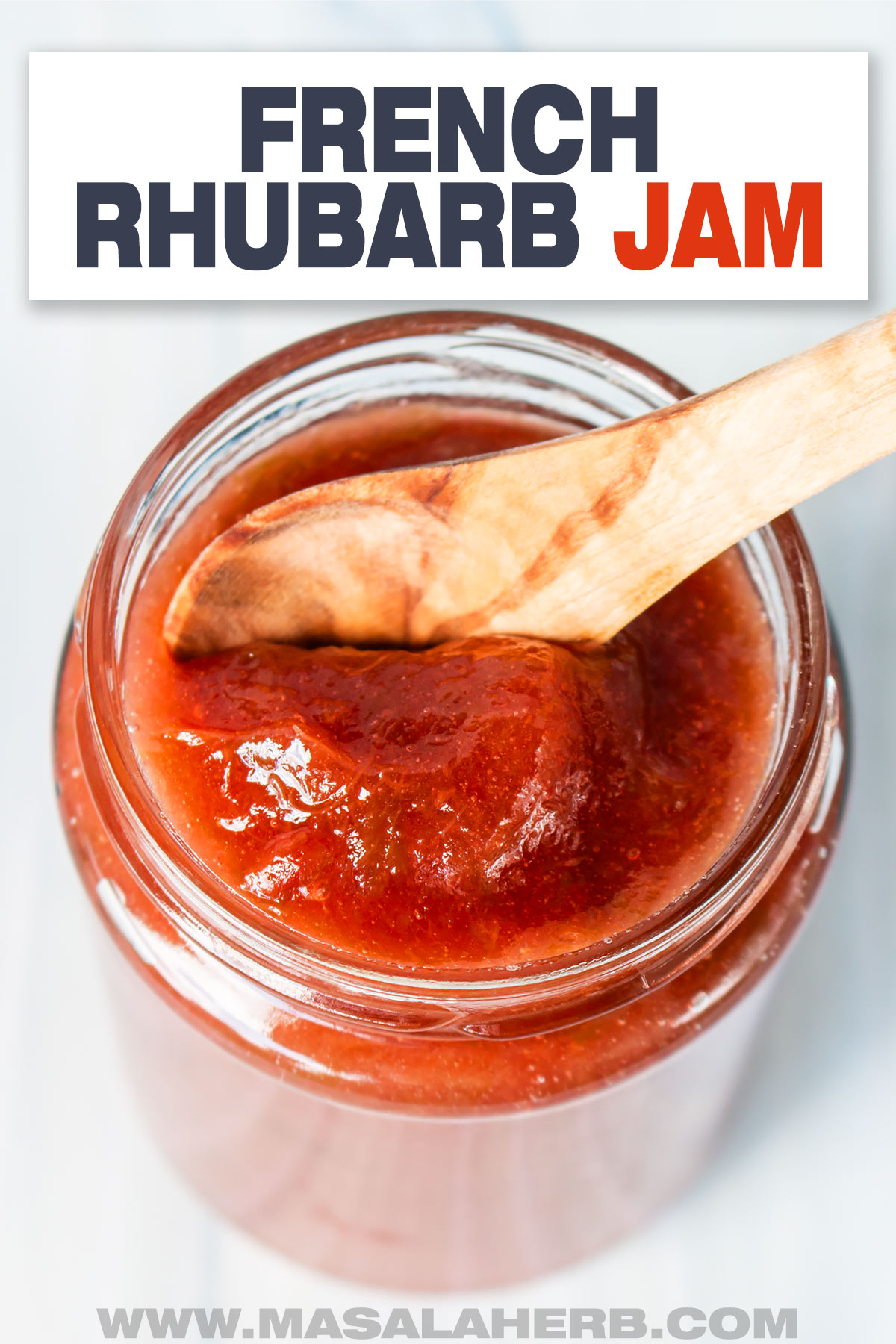

Global Food Recipes
with Spices and Herbs
Free E-Book available for a limited time. Grab yours now and get instantly inspired!
You missed out!
Jump to:
Ingredients
To prepare this rhubarb jam without pectin, you will need only 3 ingredients.
- Rhubarb — Fresh stalks. The fresher, the better! The rhubarb should be firm and not limp.
- Sugar — Plain crystal sugar. You don't need any special sugar to make this jam!
- Lemon — A whole lemon juiced. The juice adds flavor and helps in setting, but the lemon halves contain natural pectin and therefore need to be added to the jam during the cooking process. The more natural pectin, the better your jam will set and the longer it will remain good.
Tip: Get organic untreated (no pesticides) lemons if you can because you will be adding the entire lemon to your food. The problem is, that not every country labels pesticides-free as organic, so organic doesn't always mean pesticides-free. Check the labels!
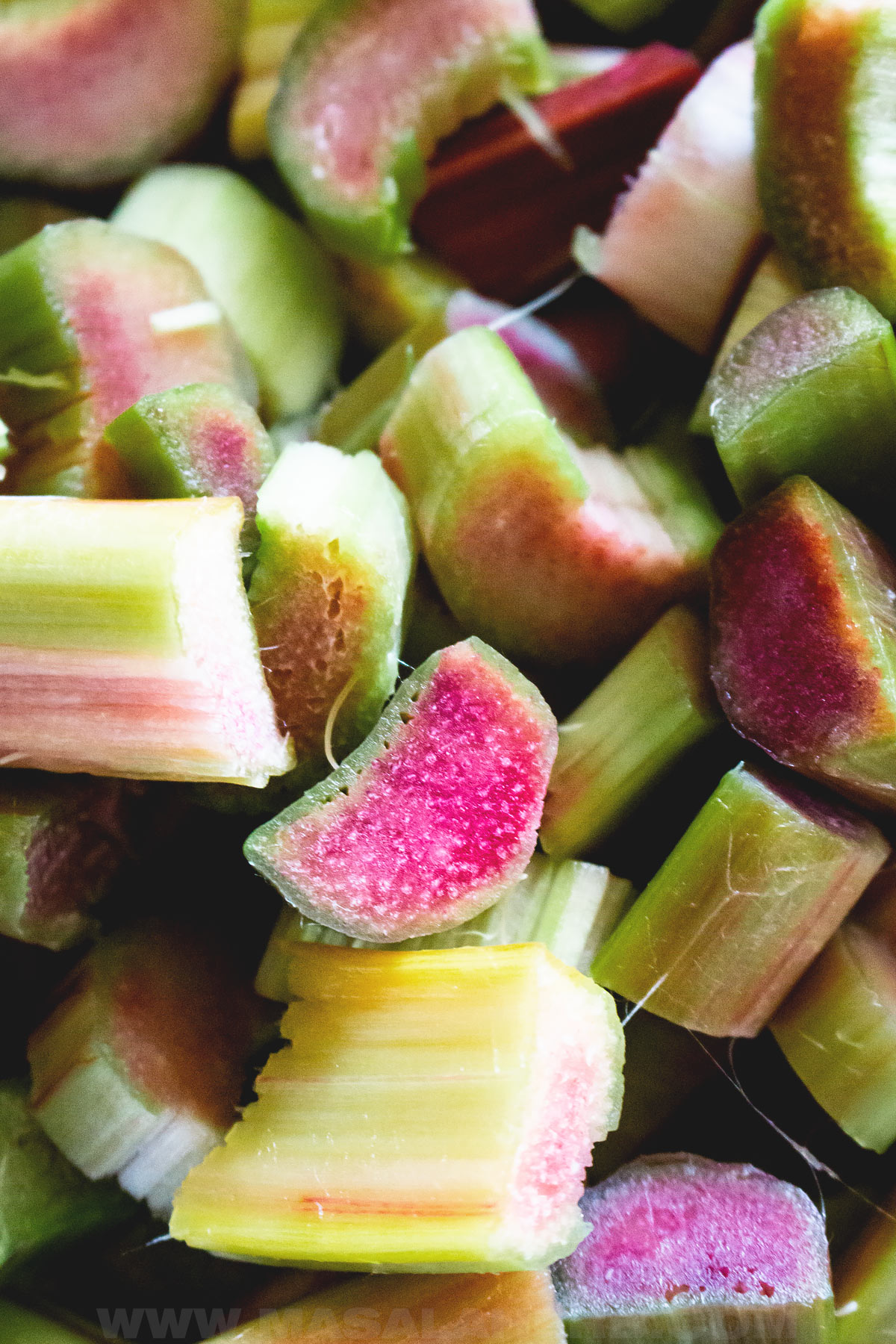
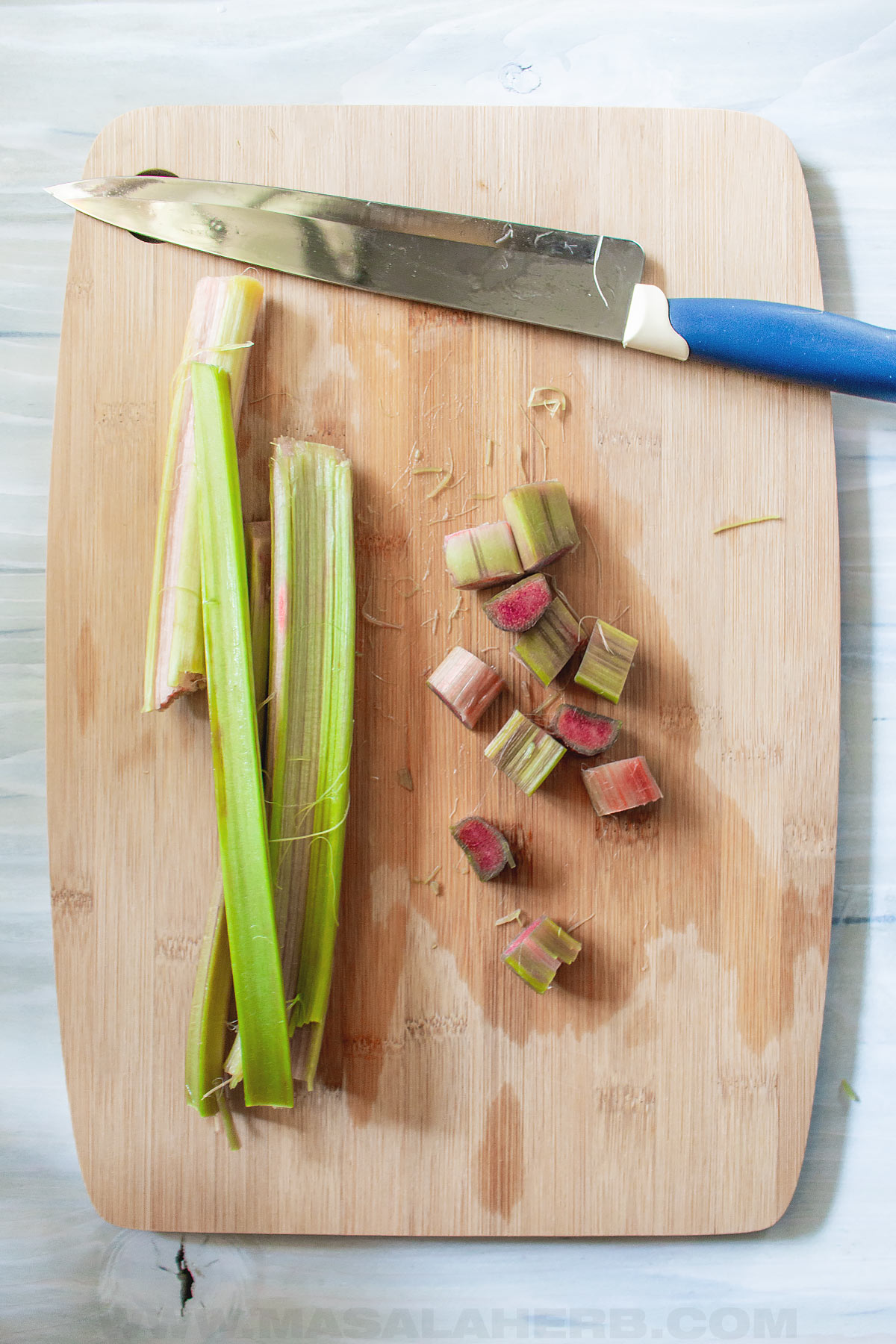
How to make it?
The rhubarb preserve is prepared without artificial pectin, and it is a French recipe. That means, our jams are all made that way.
Moreover, french jams are not canned in a water bath, BUT the FDA in the US recommends this.
You are free to water bath can your jam jars to add another layer of preservation protection.
Here are the steps to make the jam first from scratch.
Step 1
Rinse, peel and cut your rhubarb stalks into pieces.
Bring the rhubarb with the sugar and lemon to a rolling boil
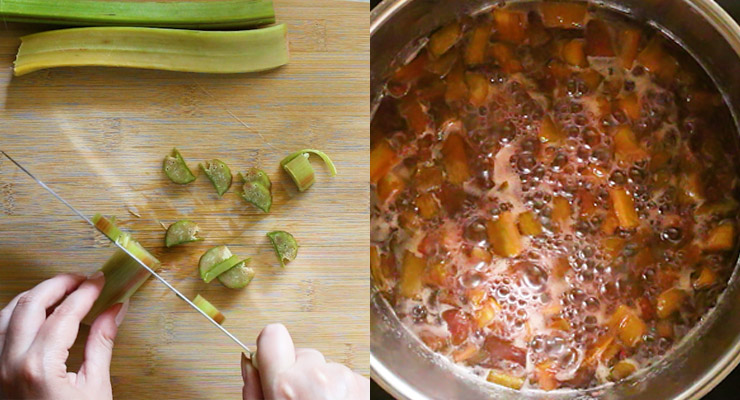
Step 2
Let the jam simmer on a medium to slow flame until the jam is set.
You can blend the jam smooth with a hand blender.

Step 3
Test if the jam is set and place into clean sterilized jars.
Close jars tight with lids and turn upside down to create a vacuum.
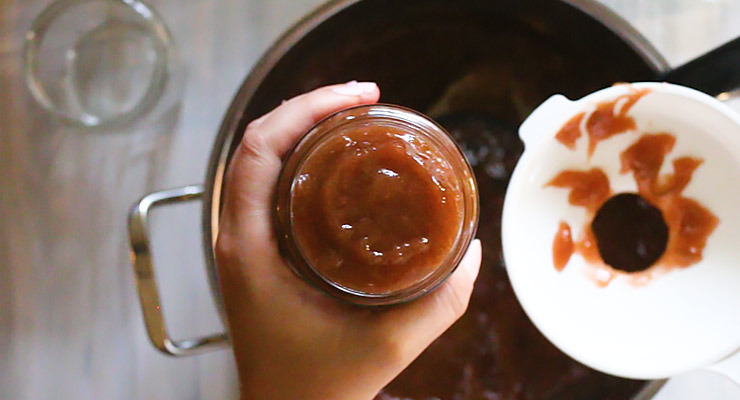
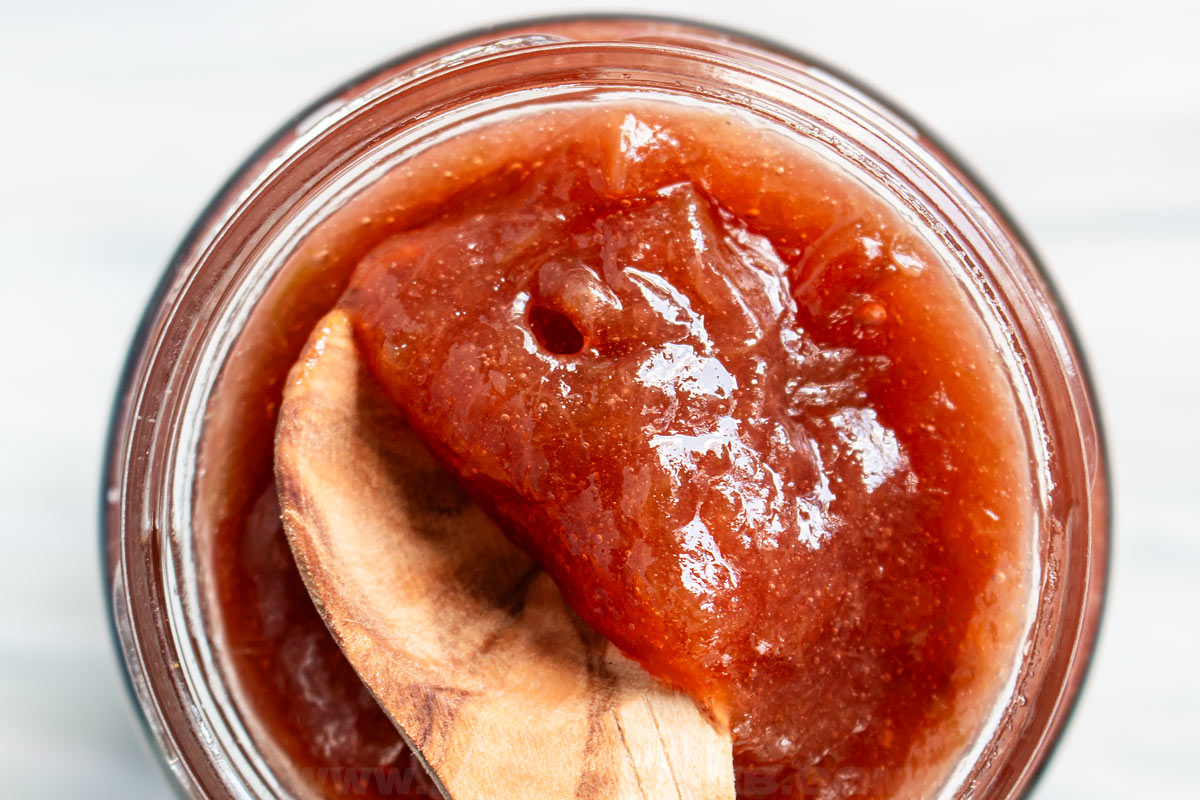
📖 Recipe
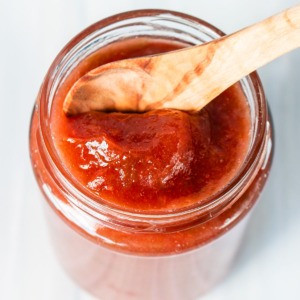
French Rhubarb Jam Recipe
Ingredients
Instructions
- Rinse your rhubarb stalks and peel.2.2 pounds Rhubarb
- Cut your rhubarb stalks into smaller pieces/slices.
- Place the rhubarb pieces into a large jam pot.
- Add sugar and the juice of the lemon. You can add the lemon halves too if you like (extra natural pectin).3 ½ cups Sugar, 1 Lemon
- Mix everything well. At this point, you can choose to leave the ingredients to infuse for a while (i.e., macerate overnight), which might result in a better jam, or you can start to cook the jam straightaway.
- Bring your jam to a rolling boil and stir occasionally.
- Take down the heat and allow your jam to simmer or cook slowly until it is set.
- Check if your jam is set with a candy thermometer, 220 Fahrenheit/ 105 Celsius. Also, do the setting test by dropping some hot jam on an ice-cold plate (which you kept in the freezer previously) and move around the plate to see if the jam is running. The jam is set if it's not moving, if not, cook your jam further and repeat the test until set. *see Notes
- Pour jam into clean sterilized jars and fill up to the rim. Close with a lid tight and turn upside down quickly.
- Leave the jam like that until it has cooled a bit, and you can turn it back. Don't keep your jam upside down for too long or else you will have unwanted vacuum pockets forming at the jar base.
- Label and store in a cool and dry place until further use. Store in the fridge once opened.
Notes
- Use garden fresh organic untreated rhubarb if possible.
- Do not reduce the sugar in the recipe. Read up in my post why.
- Use the lemon juice and lemon halves in your jam. The lemon halves contain plenty of natural pectin, which helps to preserve the jam.
- Only use untreated lemon if you use the lemon halves in the jam because of the pesticides that they put on the lemons. You don't want pesticides in your jam.
- The cooking time is relative and can be anywhere somewhere between 30 and 90 minutes. Please read up my post for details about setting the temperature and time.
- You have to test your jam if it's set, it's a must or else you won't know if your jam will store well at room temperature.
- Test with the ice-cold plate. When the plate is ice-cold and some hot cooked jam is dropped on the ice-cold plate, the jam cools down instantly and reveals its true consistency. Hot boiled jam will always appear liquid, and that can be misleading because you will think that it's not set. Jam thickens when it cools down.
- I use the ice-cold plate method only at home, but if you are unsure and this is your first jam, get a candy thermometer to help you understand when a jam is set. Generally, it makes sense to use a candy thermometer because of food safety.
- Serving of 70 Teaspoons = about 3 jam jars.
- Use quality jam jars and jam making equipment.
Equipment
- 8" Chef Knife
- Jam Pan (copper) OR a large stainless-steel pot 16 quarts or about 15 liters.
- Long Handle Wooden Cooking Spoon It's easier to stir jam with a long handle and with a wooden one so that the heat doesn't transfer.
- Wide Mouth Funnel Simplifying pouring jam into jars.
- Heat-Resistant Jam Jar Tongs To pick up the hot sterilized jars or the jars filled with hot jam.
- Ice cold plate to manually test setting stage.
- Canning Thermometer to test setting temperature (optional).
- 3 Half Pint Jars about 300 ml.
- 3 labels To mark name and canning date.
Nutrition
FAQs
This is a French rhubarb jam recipe from my maternal family side. We don't add pectin sugar or sure jell to our rhubarb jams because our jams preserve well without, thanks to our preservation technique. Commercial pectin sugar tends to alter the taste and texture of a jam, turning it artificial and unnatural.
To preserve all the goodness of the fruits, we choose to continue our family tradition by using only quality fruits and regular sugar in our homemade jams.
Sugar helps in preserving the fruits and ultimately prolongs the shelf life of a homemade jam. The sugar quantity in this recipe was perfected and should not be modified because rhubarb is sour as it is and varieties of rhubarb don't differ much. Keep in mind that a jam is meant to be eaten in small quantities, spread over your breakfast bread or used as a doughnut filling.
Fresh Rhubarb is low in natural pectin, just like strawberries and apricots.
However, to prepare a pectin-free rhubarb preserve, you can add lemon juice and even the lemon halves with seeds to the jam. You can choose to add the lemon halves, it's optional. Citrus fruits are high in pectin, and lemon is a great addition to your jam to add natural pectin.
Your jam is runny if the jam hasn't set and needs to cook further until the setting temperature has been reached. The setting temperature can be checked with a candy thermometer and is at 220 Fahrenheit/ 105 Celsius. You can also test if the jam is set by dropping some hot jam on an ice-cold plate. Turn around the plate and if the jam is running, it's not set, and you just need to cook your jam further. Repeat the process. Furthermore, please keep to the recipe ingredients and don't cut down on the sugar or don't add water to the jam, as this can be another reason why your jam is runny.
Occasionally, when we are unsure if the jam has set, and we cook the jam further, it can turn hard. This is where a candy thermometer comes handy so that you don't exceed the 220 Fahrenheit/ 105 Celsius. Jam looks liquid when it's hot cooking, and that can be the misleading factor. The jam turns thick when it's cooling down, and this is the prime reason why a jam turns stone hard. It's easier to fix a runny jam than a hard jam. You can try to add a small amount of water by heating the jam up and mixing it all. Keep in mind to use up the jam asap because you have added water and this can reduce the shelf life of your jam.
There is no exact time frame.
Your jam can be done after 30 minutes or 80+ minutes as it depends on the fruits, stove, and heat level that you used. I like to cook my jam on a medium to light simmer after the rolling boil until it's set. Usually, my rhubarb jam takes about 30–45 minutes until it's set. You need to test to see if your jam is set, that is important!
Store your rhubarb jam in clean sterilized jam jars with clean lids. You can sterilize your jars by placing them in a water bath on the stove, or by keeping them in the oven to kill all germs. Fill up your jam jars up to the rim with jam. Add 2-3 drops of rum, vodka or similar into the lids to kill further all germs. Close your jars tight with the lids and quickly turn your jam upside down to create a vacuum. Keep the jars like that for a few hours or overnight, label them, and store in a cool and dry place until further use. Store your jar in the fridge once opened or if you live in a tropical, humid climate.
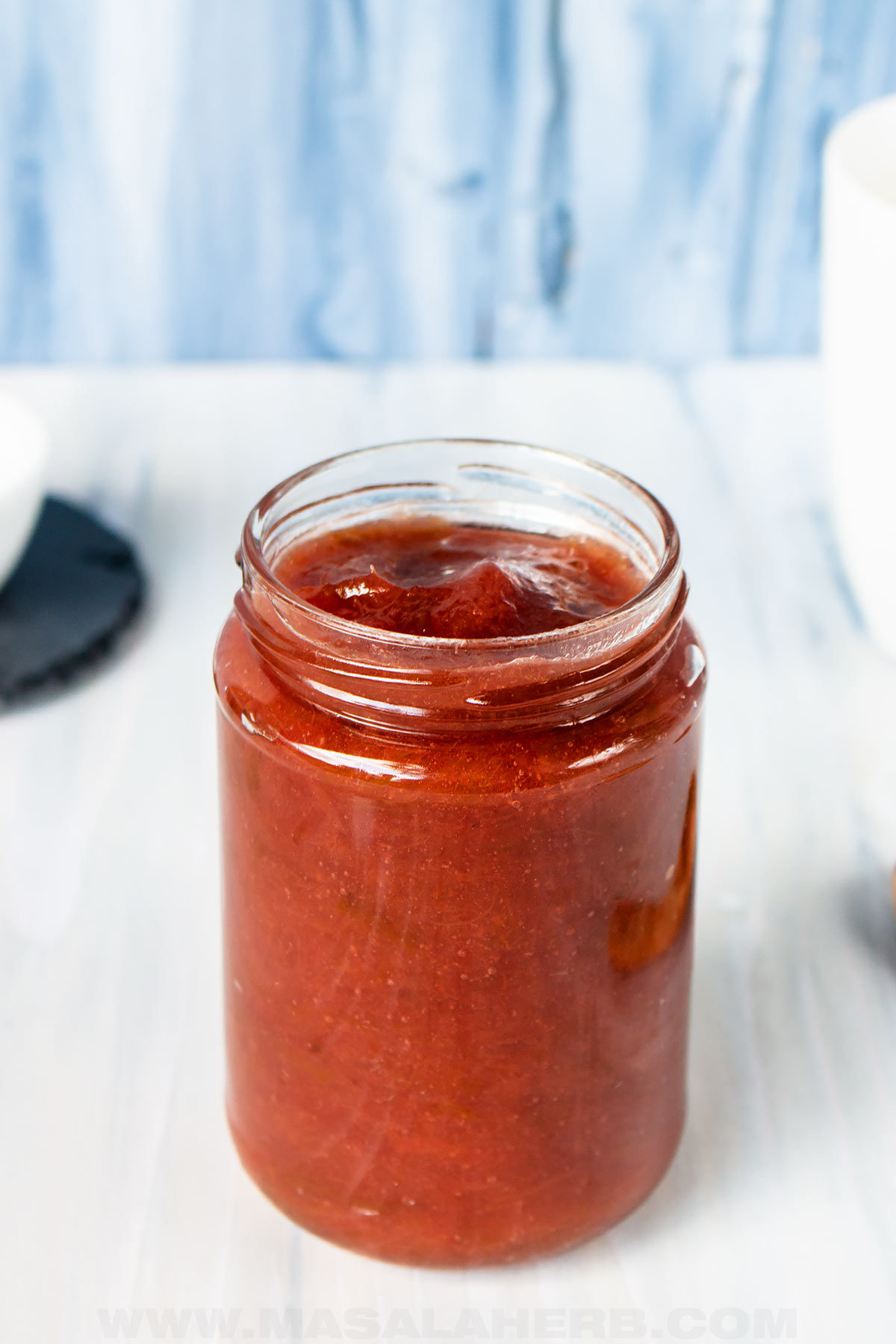
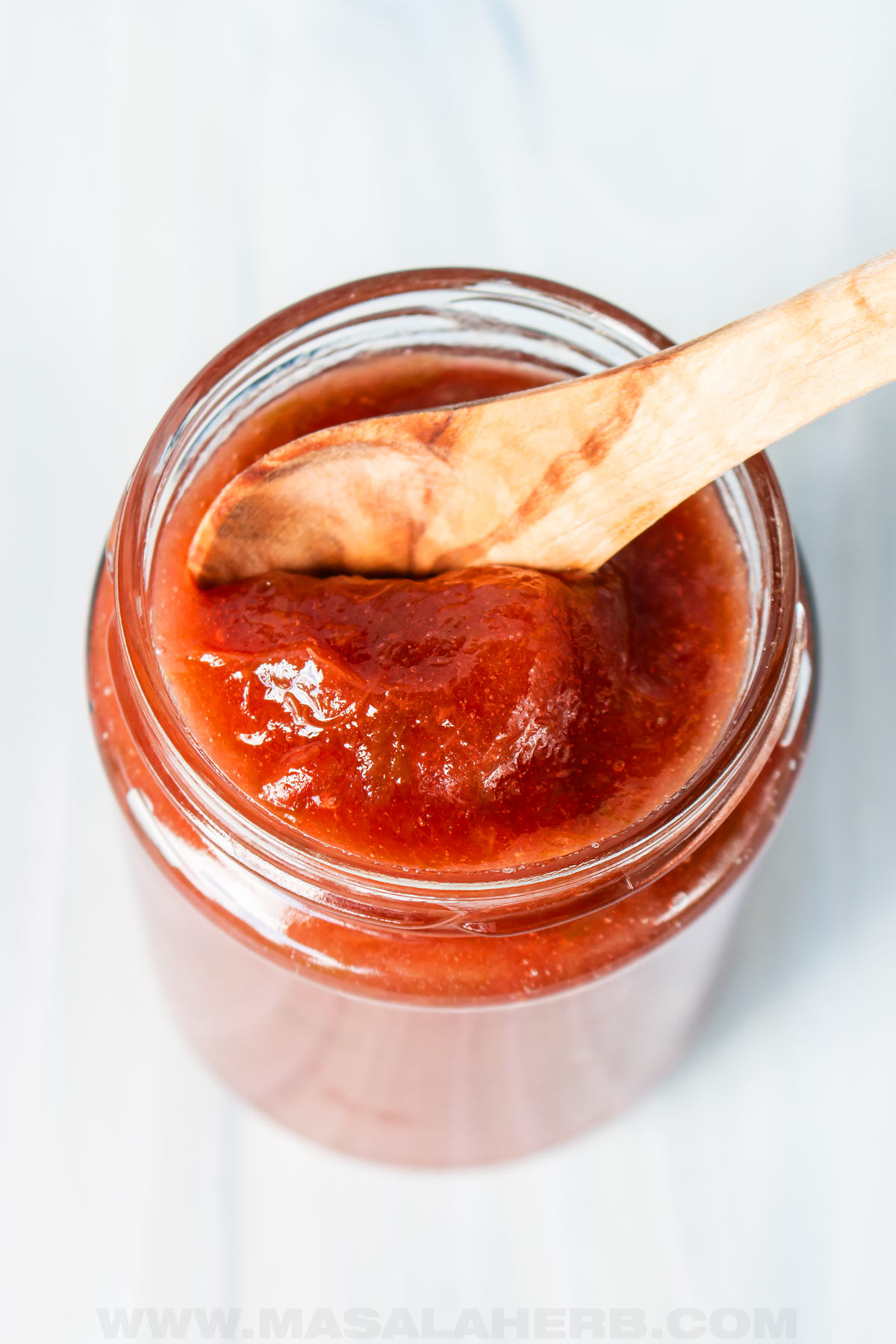
How long will my jam last?
If you follow all preservation steps as described above, your jam will last months.
We store our jams for up to 10–12 months at room temperature, unopened on a shelf in a pantry.
Keep away from humidity, heat and direct sun. That means a wet basement is not the best place to store your jam, and the attic can get too hot.
Usually, our rhubarb jams are consumed before the time frame.
Keep in mind, that once you open your jam, that you MUST store it in the fridge because you unsealed and released the vacuum. At this point, consume it within weeks.
More rhubarb recipes
- Quick Rhubarb Sauce for sweet and savory meals
- Rhubarb Strawberry Jam
- Almond Rhubarb Tart
